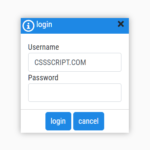| Author: | Rachel Reveley |
|---|---|
| Views Total: | 11,026 views |
| Official Page: | Go to website |
| Last Update: | December 22, 2016 |
| License: | MIT |
Preview:

Description:
A smooth, responsive, vertical accordion UI that expands the current accordion panel on mouse hover, built using pure CSS and flexbox model.
How to use it:
Create the accordion panels as follow:
<article>
<h2>Section 1</h2>
<div>
<h3>Section 1</h3>
</div>
</article>
<article>
<h2>Section 2</h2>
<div>
<h3>Section 2</h3>
</div>
</article>
<article>
<h2>Section 3</h2>
<div>
<h3>Section 3</h3>
</div>
</article>
...The main layout CSS:
html, body, div + div {
width: 100vw;
height: 100vh;
}
div + div {
list-style: none;
position: relative;
display: flex;
flex-direction: row;
flex-wrap: nowrap;
align-items: stretch;
overflow: hidden;
}
article div {
text-align: left;
width: 58vw;
}
The CSS for the hover interaction.
div + div:hover article {
flex: initial;
width: 10%;
}
div + div article:hover { width: 60%; }
article > div {
opacity: 0;
transition: opacity .2s ease 0;
}
div + div article:hover > div {
opacity: 1;
transition: opacity .3s ease .3s;
}Make the accordion fully responsive:
@media (max-width: 900px) {
div + div article { padding: 2vh 3vw; }
div + div article > h2 {
transform: rotate(90deg);
bottom: 23vh;
min-width: 12em;
text-align: left;
transform: rotate(-90deg);
transform-origin: 0 0 0;
opacity: 1;
}
div + div article:hover > h2 { opacity: 0; }
article div {
max-height: calc(72%);
overflow-y: auto;
}
}









